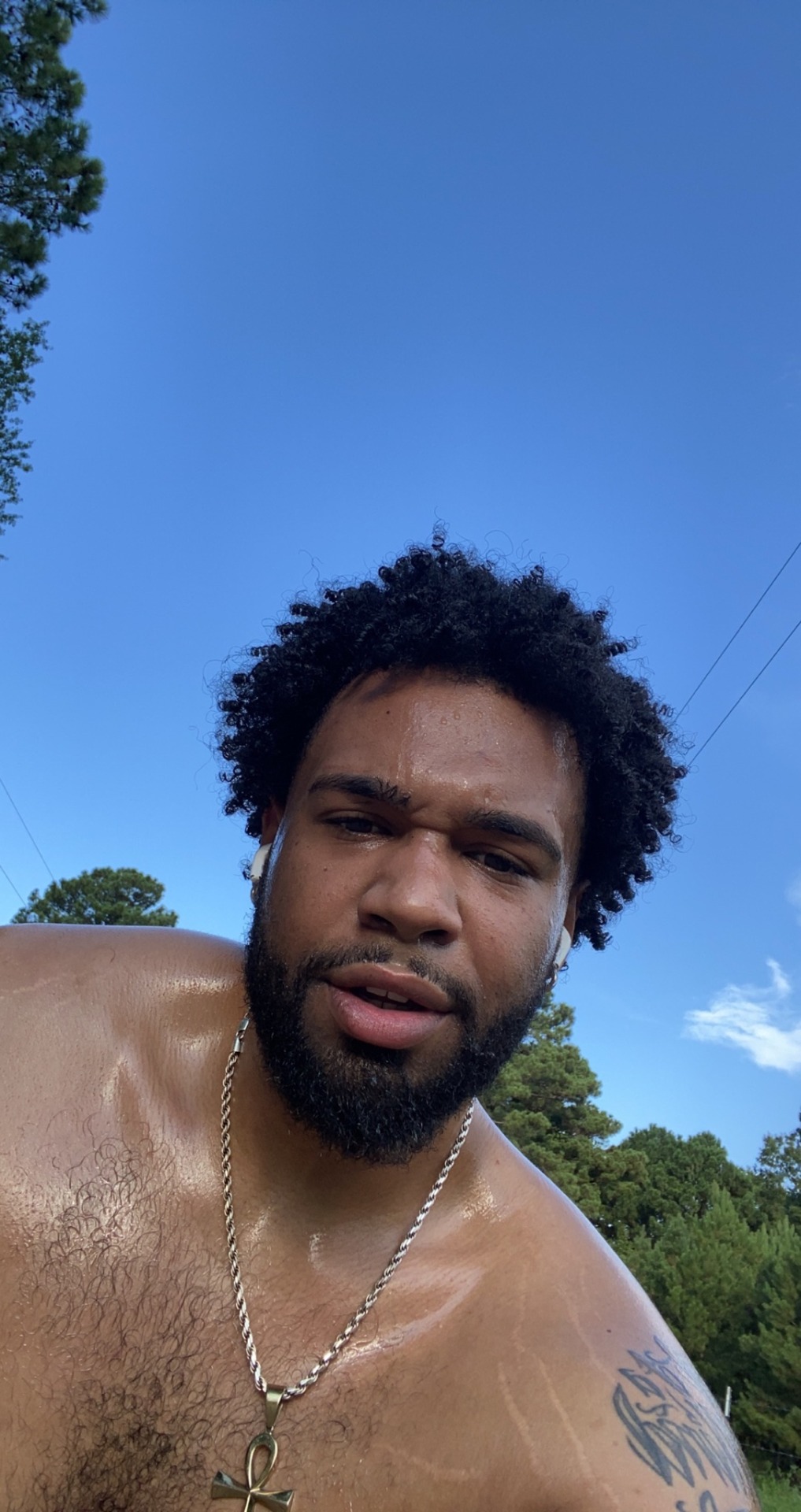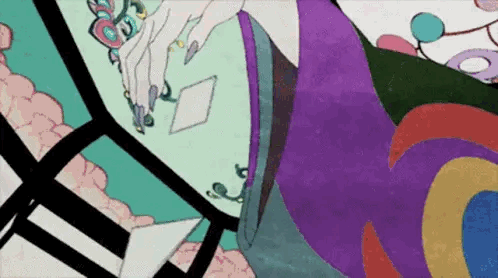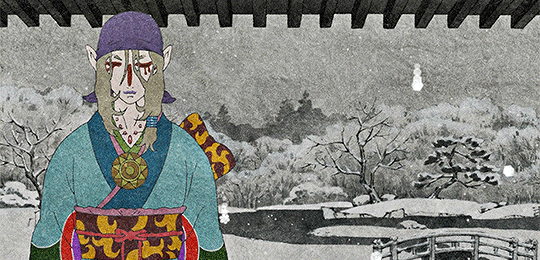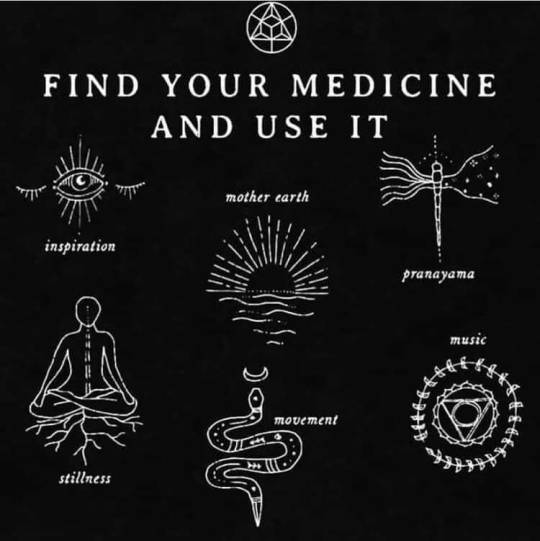#movement is medicine
Text
youtube
Been doing most of these, got to work on some of them though.
#project batman#batman#bruce wayne#martial arts#training#exercise#fitness#work out#kung fu#bioneer#urban ninja#movement#movement is medicine#Youtube
3 notes
·
View notes
Text

Successful run/sweat session, right before the Sun started to go down. 🤎✌🏽🌞
25 notes
·
View notes
Text
20 minute Yoga with Adriene Core Flow
Focused yet relaxed, effective but not over-exerting 20 flow for the abs.
Link: https://www.youtube.com/watch?v=6uVSkvWO7As
#cptsd recovery#recovery#workout#yoga#yoga flow#core work#health and wellness#depression recovery#movement is medicine#move your body#move your body today
1 note
·
View note
Text



















#vaccines#polio#measles#smallpox#diphtheria#meningococcal meningitis#haemophilus influenzae type B#pertussis#vaccine hesitancy#anti vaxxers#anti vax movement#antivaxers#COVID vaccine#anti vaccination#anti vaccine#science#medicine#religion is a mental illness#immunology
248 notes
·
View notes
Text
Blue Heron hunting
Source Me laf@ilyF ❤️
#original photographers#colors#artists on tumblr#oklahoma#my photos#my escape#my photgraphy#nature#photographers on tumblr#blue heron#hunting#birds#wildlife#medicine creek#my video#movement#music
27 notes
·
View notes
Text
not tto brag but im the bravest person i know
#^ said through tears#the needle wasnt as bad as it looks but#the actual medicine Burns for a few mins#like you get 2 mins of oh that wasnt bad! before it starts Burning#you can feel it spreading#it feels like#you know when you touch something So hot it almost feels cold before your brain processes it?#thats what it feels like while it spreads#its like searing hot pain#it also feels like#hmm#like a razor blade#like if ur scoring bread before you bake it but the bread is my thigh#just a super thin sharp pain#like depending on where i do it i cant walk for a few mins without crying#cause any little muscle movement feels like my skin being ripped open <3#and i have a really high pain tolerance luckily !! so i cant imagine how it’d feel if i didnt#sorry this got descriptive you guys dont need to know any of this#tbd
11 notes
·
View notes
Note
hi! I saw your tags on my post, and wanted to ask what you meant by ndn/landback? Genuinely curious to what they mean
hello! ^^
ndn is a way that native americans (typically the usa) refer to themselves as a sort of "take back" from being incorrectly called "Indians" in the irl past (columbus called the caribbean the 'west indies' when the americas where colonized) (im ojibwe and use ndn for myself)
Landback is an indigenous movement for the return of sovereignty to the indigenous stewards of the usa and colonized lands. Its all connected to using our medicine and not being stopped by borders in our quest to have self determination once again.
I tagged your post bc it truly spoke to me for these reasons, the "we have different versions of beautiful" and i genuinely love the poem and the artwork ^^
im sure landback is a worldwide thing (the Sámi and Māori, Austrailian aboriginal, Aotearoa, all have their versions,) but the term i know use is from the u.s.a indigenous peoples ^^
#ti talks#it was a beautiful poem and art and it spoke to me#answered#landback#its an indigenous movement to return stewardship and self determination to the native people.#mostly we want to move without borders‚ practice our medicine without the laws and protecting the water/land from those that wish it harm
17 notes
·
View notes
Photo

The Quest for Buddhism (118)
Buddhist cosmology
[Spinoff] Transcendental Meditation – One of the modern meditation methods.
As a comparison and contrast to Vipassana meditation (Ref) as an alternative medicine, we would like to mention Transcendental Meditation of Hindu origin.
Transcendental Meditation (TM) is a form of silent mantra meditation technique derived from the Vedas, made known in the mid-1950s by Indian Maharishi Mahesh Yogi. Maharishi summarised and presented the Vedic teachings in a form that was understandable to Westerners, using scientific language.
Advocates of the Transcendental Meditation movement (TM) claim that the technique promotes a state of relaxed awareness, stress relief, and access to higher states of consciousness, as well as physiological benefits such as reducing the risk of heart disease and high blood pressure.
Transcendental Meditation is said to foster a higher consciousness and improve one's luck (described as receiving nature's support). When done in groups, it is said to promote very powerful attunement, creating harmony and positive influences in the environment (making the world a better place).
The connection between mantra and meditation is considered a "scientific technique" and is called the "science of creative intelligence. It is said to develop latent abilities, drawing out vitality, intelligence, and fulfillment, and even "transcending" thought. Maharishi states that "transcendence" is the transcendence of the mind over thought, the turning of the mind inward, beyond thought, beyond the conscious mind, to experience pure consciousness which being absolute bliss consciousness, totally unchanging and eternal. The "ultimate goal" of transcendental meditation is "God-realisation," the realisation of the value of "God" within oneself, and the attainment of God-consciousness.
Building on the teachings of his master Brahmananda Saraswati (known honorifically as Guru Dev), the Maharishi taught thousands of people during a series of world tours from 1958 to 1965, expressing his teachings in spiritual and religious terms.
Many celebrities and celebrities such as the Beatles studied Transcendental Meditation during this period, and its influence on the subculture was significant. It is known to have had a major influence on musicians during the Flower Movement, and among hippies in the 1960s, 'meditation' and 'zen' were seen as techniques that could provide similar psychedelic experiences without the use of drugs.
They were loved by hippies as a method for 'mental expansion' and so-called 'opening the doors of perception', with Transcendental Meditation being described in the rock media as the most 'effective' and known amongst young rock lovers.
Beginning in 1965, the Transcendental Meditation technique has been incorporated into selected schools, universities, corporations, and prison programs in the US, Latin America, Europe, and India. The technique has still been included in a number of educational and social programs around the world.

仏教の探求 (118)
仏教の宇宙論
[番外編] 超越瞑想 〜 現代瞑想法の一派
代替医療としてのヴィパッサナー瞑想(参照)との比較対照として、ヒンデゥー教由来の超越的瞑想について触れておきたい。
超越瞑想 (ちょうえつめいそう、トランセンデンタル・メディテーション:TM) は、インド人のマハリシ・マヘーシュ・ヨーギーによって1950年代に知られるようになった、ヴェーダに由来するマントラ瞑想法である。マハリシはヴェーダの教えを、西洋人にも理解しやすい形で、科学的な言葉を使って要約し紹介した。
超越瞑想運動 (TM) の提唱者は、このテクニックがリラックスした意識状態、ストレス解消、より高い意識状態へのアクセスを促進し、心臓病や高血圧のリスク軽減などの生理学的効果もあると主張している。
超越瞑想を行うことで、より高次の意識が育まれ、運がよくなる (自然の支援を受ける、と表現される) という。グループで行うと、非常に強力な同調を促し、環境に調和と肯定性の影響が生み出される (世界がより良くなる) という。
マントラと瞑想の結びつきは「科学的テクニック」とされ、「創造的知性の科学」と呼ばれる。これによって潜在的な能力を開発し、活力、知性、充足感を引き出し、さらには思考を「超越」させるという。マハリシは、「超越」とは、思考を超えた心の超越であり、意識を超え、純粋意識を体験するために心を内側に向けること、純粋意識は絶対至福意識であり、全く不変であり、永遠であると述べている。超越瞑想の「究極の目標」は「神の実現」であり、自らの内にある<神>の価値に気づき、「神意識」に到達するとされる。
マハリシは、師であるブラフマナンダ・サラスワティ (敬称はグル・デヴ) の教えを基に、1958年から1965年までの一連の世界ツアーで何千人もの人々に教え、その教えを精神的、宗教的な用語で表現した。
この時期、ビートルズなど多くの有名人や著名人が超越瞑想を学び、サブカルチャーに与えた影響は大きい。フラワームーブメントの時期のミュージシャンに大きな影響を与えたことが知られており、60年代のヒッピーの間では、「瞑想」や「禅」は薬物を使用せずに同様のサイケデリック体験ができるテクニックとして捉えられていた。
「精神拡張」、いわゆる「知覚の扉を開く」ための方法としてヒッピーたちに愛好され、中でも超越瞑想が最も「効く」とロック系のメディアで語られ、ロックを愛好する若者の間で知られていた。
1965年以来、超越瞑想法は、アメリカ、ラテンアメリカ、ヨーロッパ、インドの特定の学校、大学、企業、刑務所などのプログラムに取り入れられている。この技法は、現在も世界中の数多くの教育・社会プログラムに取り入れられている。
#transcendental meditation#modern meditation method#vedic tradition#hippie#matra#alternative medicine#mental expansion#flower movement#60s#meditation#psychedelic movement#philosophy#nature#art#history
115 notes
·
View notes
Text
*Student 1 had recently had an abdominal surgery*
Student 1: Bruh, I feel nauseous, I’m so bloated, my stomach hurts and I haven’t pooped in 2 days...
Student 2: You’ve at least been passing gas, right?
Student 1: ...
Student 2: ...
Student 1: Fuck.
#medicine#med school#medblr#semiology#ileum#bowel movement#bowel problems#bowel obstruction#student 1 did some gas-relieving exercises and everything was fine
33 notes
·
View notes
Text
2 days into the new year I've spent most of it injured in bed
Pain meds are working tho ayeeee
#spent new years sitting on a chair alone in my room while family had a party in the living room :')#had some pinched nerve on my neck that made my entire left arm and neck basically immobile#any slight movement caused a huge sharp pain to travel up it sucked hard#went to urgent care and got prescribed medicine for it. doing its best to work but it still hurts in the morning#lizmet
4 notes
·
View notes
Link
27 minute practice with Adriene called “Hug.” It’s got some fire in it, too, but lots of self-nourishing vibes.
0 notes
Text
look i really dont mind having a pre t body with its little biological quirks but i have a limit and the limit is waking up at 4am with immense pain and a puddle of blood on my bed
#im probably most likely overhyping what t will do to my body but i cant wait till my periods stop#if they dont stop i will fr go after some way of stopping them im not kidding there is literally nothing good that i get from having them#its just. its just pain and blood and a constant reminder of how Woman i have to be. it makes me sad#like. all the good cramp medicine is like WOMAN PILL FOR YOUR SCHEDULED GIRL MOMENT OF THE MONTH [picture of a woman]#[venus symbol] [flowers]#and all pads come with th same thing too. like i get that its technically not harming anyone but please man cmon#my mood gets all janged up i cant think straight in the worst ways possible im always having breakdowns during them#and i have to deal with genuinely unbearable pain! and! a heavy flow! because my moms ovaries! are the most fucked ovaries ever!#hhg the only good thing i can think of is that if there was a death metal band of trans guys the lyrics theyd write would be sick#[hi this is me telling you im about to get a little gross so if stuff like this grosses you out uh. yeah]#like the gruesome symbolism of periods is pretty damn cool if im honest. i dunno#i genuinely really like the movements on normalizing periods and how they are not something to be ashamed of and happen with a lot of ppl#but. but.#it puts a lot of emphasis on how its a Woman thing when a lot of women (cis or otherwise) dont have them#and it excludes all the other non woman people who have them#re personal opinion but i think our image of periods really shouldnt be flowery beautiful woman moment that passes by in a blink.#i think we should talk about how it hurts and how it will suck a little too hard for some people and that#periods not always mean a symbol of feminity and fertility and other stuff (its 5am im tires) to everyone#like to me periods are misery and oain and dysphoria but i have a cis friend who sees her periods as symbols of her womanhood abd#*and like. shes not wrong but im also not wrong either#idk my head hurts and i wanna go bacm to sleep so bye#sg.txt
25 notes
·
View notes
Text
I feel like with the Internet and all our society is kind of entering this new phase in terms of nationality of like, people who kind of think Nationalist-ly or Globally/human-ly? Like a lot of our communities and important social spaces are not as restricted by like relative global position anymore and it's like very easy to get news about shit happening halfway across the world.
#yeah this is about free Palestine movement btw bc the media censorship is so crazy and its also like really highlighting#a divide between how people of like different internet usage? get their news/tap into world events/have political concerns#like genuinely the fact that there is such a strong narrative of like 'protecting national interests' is kind if fucking shocking to me#bc it made me realize this divide of like. a lot of us dont fucking see ourselves as being on 'teams' with our capitalist regimes anymore#when i see decisions by the US in politics i dont think of it as 'us' vs them because its so obvious i have more in common with the kids#studying medicine and making art and wanting to see their families again in Palestine than the assholes who love murdering them#and i am shocked to realize that like people like my parents for example dont feel that way at all? like they dont like whats happening#but whenever i bring it up they kind of feel the need to half heartedly come up with excuses for Joe and try to keep me from having my like#strong opinion i have about not endorsing endless child murder.#personal#vent
4 notes
·
View notes
Note
17 & 29!
17. Do you eat/drink when drawing? if so, what
i always have a glass of water next to me when drawing and that's it 👍
29. Media you love, but doesn't inspire you artistically
hmmmm, i honestly can't really think of any piece of media i love that doesn't inspire me artistically?? cause even if it doesn't inspire my art it still tends to get me excited to draw. if that makes sense??
if i had to pick one tho,,,, mononoke (2007)
the art in that is insanely cool and i adore it so much, the series itself is so out there and surreal too. but not anything that is a part of my own art.


#i just think mononoke is underrated idk#its so visually stunning#the medicine seller has a really pretty design too#the colors the patterns the artstyle the movement#just look at the snowflakes aaaaaaaaaaaaaaa its so cool i#its getting a movie too... after 15 years 🎉🎉🎉#i was totally overthinking 29 aahahaaaaaaaaaa#dizzyanswers
15 notes
·
View notes
Text
Sarah Parker Remond (June 6, 1826 – December 13, 1894) was an American lecturer, activist and abolitionist campaigner.

Born a free woman in the state of Massachusetts, she became an international activist for human rights and women's suffrage. Remond made her first public speech against the institution of slavery when she was 16 years old, and delivered abolitionist speeches throughout the northeastern United States. One of her brothers, Charles Lenox Remond, became known as an orator and they occasionally toured together for their abolitionist lectures.
Eventually becoming an agent of the American Anti-Slavery Society, in 1858 Remond chose to travel to Britain to gather support for the growing abolitionist cause in the United States. While in London, Remond also studied at Bedford College, lecturing during term breaks. During the American Civil War, she appealed for support among the British public for the Union and their blockade of the Confederacy. After the conclusion of the war in favor of the Union, she appealed for funds to support the millions of the newly emancipated freedmen in the American South.
From England, Remond went to Italy in 1867 to pursue medical training in Florence, where she became a physician. She practiced medicine for nearly 20 years in Italy and never returned to the United States, dying in Rome at the age of 68.
Early years
Born in Salem, Massachusetts, Remond was one of the between eight and 11 children of John Remond and Nancy (née Lenox) Remond.[1] Nancy was born in Newton, daughter of Cornelius Lenox, a Revolutionary War veteranwho had fought in the Continental Army, and Susanna Perry.[2] John Remond was a free person of color who immigrated to Massachusetts from the Dutch colony of Curaçao as a 10-year-old child in 1798. John and Nancy married in October 1807, in the African Baptist Church in Boston. In Salem, they built a successful catering, provisioning, and hairdressing business, becoming well-established businesspeople and activists.
The Remonds tried to place their children in a private school, but they were rejected because of their race. When Sarah Remond and her sisters were accepted to a local high school for girls which was not segregated, they were expelled, as the school committee was planning to found a separate school for African-American children. Remond later described the incident as engraved in her heart "like the scarlet letter of Hester."[1] In 1835, the Remond family moved to Newport, Rhode Island, where they hoped to find a less racist environment in which to educate their children. However, the schools refused to accept black students. Instead, some influential African Americans established a private school, where Remond was educated.[1]
In 1841, the Remond family returned to Salem.[1] Sarah Remond continued her education on her own, attending concerts and lectures, and reading widely in books, pamphlets and newspapers borrowed from friends, or purchased from the anti-slavery society of her community, which sold many inexpensive titles.[3] The Remond family also took i
n as boarders students who were attending the local girls' academy, including Charlotte Forten (later Grimké).[4]
Three of Remond's sisters built a business together: Cecilia (married to James Babcock), Maritchie Juan, and Caroline (married to Joseph Putnam),[4] "owned the fashionable Ladies Hair Work Salon" in Salem, as well as the biggest wig factory in the state.[5] Their oldest sister Nancy married James Shearman, an oyster dealer. The Remond brothers were Charles Remond, who became an abolitionist and orator; and John Remond, who married Ruth Rice, one of two women elected to the finance committee of the 1859 New England Colored Citizens' Convention.
Anti-slavery activism and lecturing
Salem in the 1840s was a center of anti-slavery activity, and the whole family was committed to the rising abolitionist movement in the United States. The Remonds' home was a haven for black and white abolitionists, and they hosted many of the movement's leaders, including William Lloyd Garrison and Wendell Phillips, and more than one fugitive slave fleeing north to freedom. John Remond was a life member of the Massachusetts Anti-Slavery Society.[2] Sarah Remond's older brother Charles Lenox Remond was the first black lecturer of the American Anti-Slavery Society's and considered a leading black abolitionist. Nancy Remond was one of the founders of the Salem Female Anti-Slavery Society.[1] Nancy not only taught her daughters the household skills of cooking and sewing but also to seek liberty lawfully; she wanted them to take part in society.[3] With her mother and sisters, Sarah Remond was an active member of the state and county female anti-slavery societies, including the Salem Female Anti-Slavery Society, the New England Anti-Slavery Society, and the Massachusetts Anti-Slavery Society. She also regularly attended antislavery lectures in Salem and Boston.[2]
With the support and financial backing of her family, Sarah Remond became an anti-slavery lecturer, delivering her first lecture against slavery at the age of 16, with her brother Charles in Groton, Massachusetts, in July 1842.[6] Remond rose to prominence among abolitionists in 1853, when she refused to sit in a segregated theater section. She had bought tickets by post for herself and a group of friends, including historian William C. Nell, to the popular opera, Don Pasquale, at the Howard Athenaeum in Boston.[7] When they arrived at the theatre, Remond was shown to segregated seating. After refusing to accept it, she was forced to leave the theatre and pushed down some stairs.[3] Remond sued for damages and won her case. She was awarded $500, and an admission by theatre management that she was wronged; the court ordered the theater to integrate all seating.[7][8]
In 1856, the American Anti-Slavery Society hired a team of lecturers, including Remond; Charles, already well known in the U.S. and Britain; and Susan B. Anthony, to tour New York State addressing anti-slavery issues. Over the next two years, she, her brother, and others also spoke in New York, Massachusetts, Ohio, Michigan and Pennsylvania.[2] She and other African Americans were often given poor accommodation due to racial discrimination.[3] Although inexperienced, Remond rapidly became an effective speaker. William Lloyd Garrison praised her "calm, dignified manner, her winning personal appearance and her earnest appeals to the conscience and the heart."[9] Sarah Clay wrote that Remond's every word "waked up dormant aspirations which would vibrate through the ages."[1] Over time, she became one of the society's most persuasive and powerful lecturers.[10]
Abby Kelley Foster, a noted abolitionist in Massachusetts, encouraged Remond when they toured together in 1857.[11] On December 28, 1858, Remond wrote in a letter to Foster:[12]
I feel almost sure I never should have made the attempt but for the words of encouragement I received from you. Although my heart was in the work, I felt that I was in need of a good English education ... When I consider that the only reason why I did not obtain what I so much desired was because I was the possessor of an unpopular complexion, it adds to my discomfort.
see rest of article
#Sarah Parker Remond#June 6#june 6 1826#Women in history#Black women in history#Black women in the Abolitionist movement#Black women in medicine
9 notes
·
View notes
